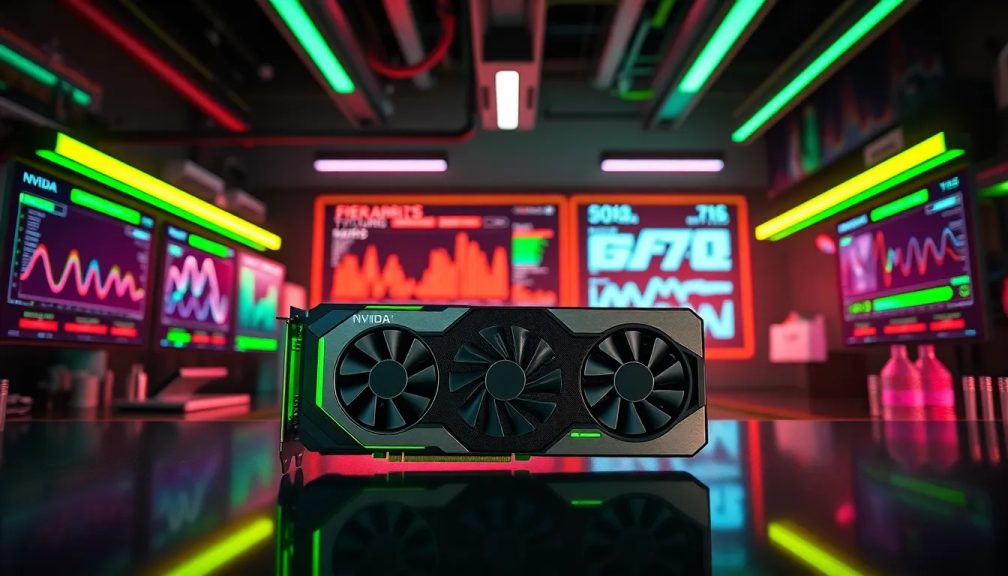NVIDIA RTX 6090: nueva GPU creada desde cero para superar expectativas

NVIDIA has been a major player in the graphics card industry since its inception in 1999, amassing over 25 years of expertise. Initially focused on the GeForce series, the company later expanded its offerings to include the Quadro line for professionals, and more recently, graphics specifically designed for artificial intelligence (AI). These AI-focused GPUs have become the company's most lucrative products, overshadowing their gaming and professional graphics. Recently, NVIDIA announced the Vera Rubin series, which includes the Rubin CPX. Speculations have arisen suggesting that it might utilize the same chip as the anticipated RTX 6090.
In recent years, there has been a significant shift towards integrating AI across various sectors, not just technology. Companies and individuals are increasingly turning to AI to enhance productivity and streamline operations. As a result, billions of dollars are being invested annually in this realm, with NVIDIA being a key beneficiary. The company's revenue now heavily relies on its AI advancements, positioning it as a leader in this transformative field.
Speculations Surrounding the RTX 6090 Chip and Its Limitations
Recent rumors suggest that the RTX 6090 may incorporate the chip from the NVIDIA Rubin CPX, however, this idea faces significant challenges. According to insider information, the Rubin CPX is a monolithic chip that lacks a video output, which raises questions about its suitability for consumer graphics applications.
While NVIDIA leads the market in terms of capitalization, surpassing tech giants like Apple, Microsoft, and Google, the focus remains on AI-centric GPUs. The Vera Rubin series has been highlighted for its impressive specifications, including the Rubin CPX with 128 GB GDDR7, boasting three times the power of the GB300 models.
However, an anonymous NVIDIA engineer has raised doubts about the viability of using the Rubin CPX chip for the RTX 6090. They referenced internal documents indicating that the chip's design is tailored for AI performance, making it an unlikely candidate for gaming tasks. The architecture's specialization in AI inferencing and training further complicates its application in consumer graphics.
The Focus of the Rubin CPX: AI at the Forefront
The Rubin CPX's emphasis on AI tasks effectively eliminates its gaming potential. This graphics card is engineered for specific workloads that utilize FP4, contrasting sharply with the requirements for gaming, which typically demand a chip optimized for FP32 vector operations combined with ray tracing capabilities.
For instance, the existing Blackwell Ultra architecture, which powers NVIDIA's AI graphics like the GB300, exhibits only 70% of the FP32 performance compared to the RTX 5090. This discrepancy raises concerns about performance if the Rubin CPX were to be used in a gaming context. It would likely require a much larger setup to achieve the necessary performance metrics, making it impractical for consumer use.
Comparative Analysis: Blackwell Ultra vs. RTX Series
The case of the NVIDIA A100 serves as a historical example. Despite using a superior 7nm process from TSMC and costing over $10,000, it performed significantly slower than the RTX 3090 in tasks such as rendering in Blender with OptiX. This scenario illustrates that having advanced specifications does not guarantee suitability for gaming or even general 3D work.
Here are some key comparisons to highlight the differences between the Rubin CPX and the RTX series:
- Performance Focus: Rubin CPX is optimized for AI, while RTX series targets gaming and general use.
- Chip Architecture: Rubin CPX utilizes FP4, whereas RTX cards rely on FP32 and ray tracing.
- Market Position: AI GPUs like the Rubin CPX cater to enterprise needs, while RTX cards appeal to gamers and creatives.
- Cost Efficiency: High-end AI graphics cards are more expensive and less accessible for casual users compared to gaming GPUs.
Future Prospects: Will NVIDIA Shift Focus Again?
Given the rapid advancements in AI technology and the increasing demand for specialized GPUs, it remains to be seen how NVIDIA will balance its portfolio between consumer gaming and AI-centric products. The company has historically adapted to market trends, and as AI continues to penetrate various industries, NVIDIA may further prioritize its development resources towards enhancing AI capabilities.
As the industry evolves, consumers and enterprises alike are keenly observing NVIDIA's next moves. The upcoming RTX 6090, although shrouded in speculation, is anticipated to set new benchmarks in performance whether it follows the rumored path of the Rubin CPX or forges its own identity. For those interested in more visual insights on these developments, check out this informative video:
As we await more information, the community remains abuzz with anticipation, eager to see how NVIDIA will leverage its extensive history and pioneering spirit to shape the future of graphics technology.




Leave a Reply